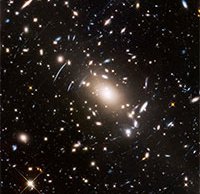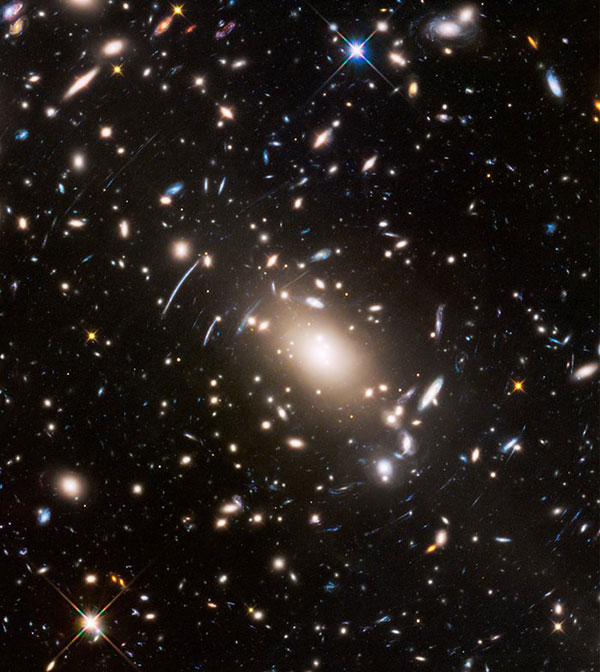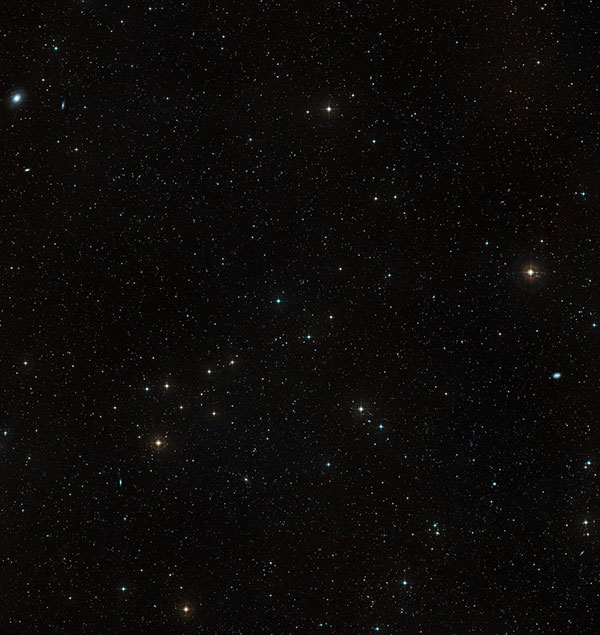The universe’s natural zoom lens: Taking a look back to a billion years after the Big Bang
posted Friday, July 22, 2016 at 5:00 PM EDT

The Hubble Space Telescope's latest target in its exploration of new frontiers is the galaxy cluster Abell S1063. This cluster is possibly the "home to billions of strange new worlds," according to the Hubble team. Due to its great distance from the telescope, viewing the center of the first image below gives us a look four billion years into the past.
However, due to gravitational lensing the image also gives us a look further back than that, at what are potentially the first galaxies generated in the universe. While I highly recommend further reading on gravitational lensing, the video below gives a good overview.
The gist is that light can be magnified as it travels through spacetime fabric that has been distorted by massive objects between the object emitting light and the observer. So in the case of Abell S1063, galaxies that would otherwise not emit enough light to reach Hubble are observable because the light from the distant galaxies is magnified. Basically, to put it in terms us photographers think about regularly, there's a "naturally-existing zoom lens in space."


NASA/ESA have also published a really cool video showing a zoom into the newly-observed Abell S1063. Do yourself a favor and watch it in 4K resolution if you can.
As pointed out by Fstoppers, the light that made the above shot of Abell S1063 possible had to travel 23,510,000,000,000,000,000,000 miles to reach the Hubble telescope.
(Seen via Fstoppers with additional information from Gizmodo. Images above are part of the public domain.)